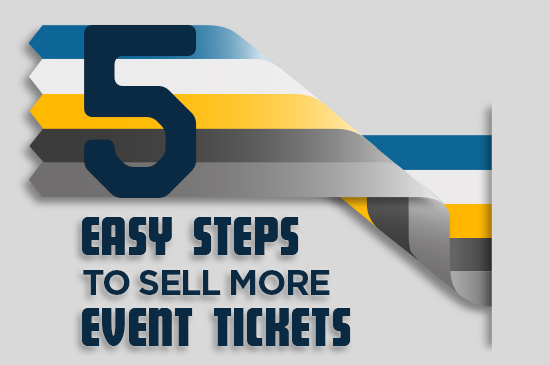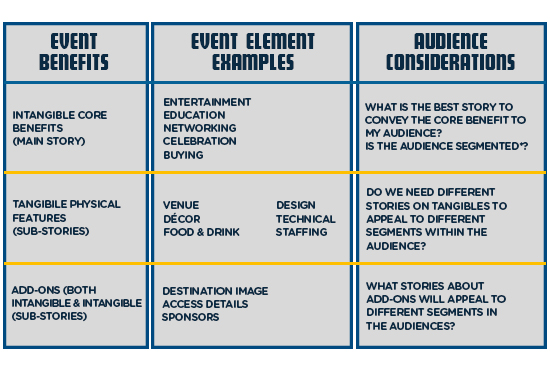Promoting your event to potential attendees is not easy. Competition from similar events, a lack of a strong event identity or lacklustre communications are factors that make it harder to attract attendees. You may have the best event design and content in the world but how do you attract your target audience to register? How do you sell more event tickets?

This article offers a 5 step process that guides event professionals through the process needed to attract attention and get registrations! It’s a process that relies on storytelling to engage your potential attendees through digitised visual communications channels – the social media.
Storify Your Event
The power of visual storytelling goes back to the days of the cave man. Our ancestors used visual stories about people – hunting, fighting, fishing and more – painted on rocks and cave walls to create narratives that were relevant to their communities. The relevance reinforced an emotional attachment and sense of identity to those communities. Not much has changed in the basic premise of using visual stories to connect with people emotionally.
In the Millennial Age it’s still about the visual representation and the relevance of those representations to your target audience or community. Why visual? It’s because the brain processes images faster than text, and because attention spans are shorter. The visual story is still the way ahead!
Relevant visual references that are well captioned connect with your target audience create an emotive reaction. Done in the right way this reaction will be positive. There’s your emotional engagement, and because you have engaged in this way, the audience sees the content as memorable. If the content is memorable and the audience is emotionally engaged, then you just have to lead them to the next step. That is registration for your event.
Step 1: The Event Concept
First you need to understand the concept for your event. Ask yourself: What type of event is this? Who is my audience? What are the elements of the event? What differentiates my event concept from other events? Make a mind map of the answers to these questions. Do it yourself or with your colleagues. Be ‘devil’s advocate’ and be critical of your ideas and what you are planning. You should make comprehensive notes on what the core benefits of the event will be to attendees, elements of the physical servicescape and any add-ons you are planning.
Step 2: Create Stories
A story can be as simple as a photograph with a simple caption. It doesn’t need to be as voloumous as a novel. Because of attention spans you need to get your story out as simply and effectively as possible. Looking at the table below, start creating little stories about the various elements of your event. Think about how you would visualise these stories, and how those visuals could be used to draw on people’s emotions. Remember that stories about people resonate. People connect with other people, so make sure you focus your story on real-life. So get storifying – lots of interesting little stories that can be told through images and videos and captioned to create an emotional connection to people and a strong identity for your event.

Step 3: Choose Your Channels
As the event organiser you need to know your potential audience. Whether this is based on robust research or on ‘gut’ feel, you need to know who they are and how they are segmented. When choosing the communications channels you will use for your social media content marketing campaign consider what kind of visual images will suit a particular channel. LinkedIn is more formal whereas Instagram and Facebook are less formal.
Looking at social media feeds for similar events will inform which channels are most used by your potential audience and at what time of day that audience is speaking on social channels. Remember social media feeds are timeline based and you don’t want to be sending out communications that are not going to be seen because it involves lots of scrolling through the feeds.
Step 4: Create Content and Share It!
You have your stories. You have chosen suitable channels. Now create you content. Content has be engaging and relevant to your audience. The little stories you have created need to be visualised. This can be done by employing photographers and videographers, buying images on line or creating your own.
Make sure the visuals convey one of your stories based on an element of the event. For example, you could visit the venue where you are holding your event. Take a photograph of the chef finishing off an enticing plate of food. The caption to create a ‘people’ approach could be: “Our chef John has been creating delicious food for 10 years. Hot smoked salmon with an amazing chilli salsa”. Send this out at 12.30 just before lunchtime. I bet a lot of people that see that post will be buying a Smoked Salmon Bagel at lunchtime. Timing is important. Having someone react emotively to your content at the right time is going to promote ‘Likes’ and ‘Shares’.
Remember that when visualising your stories it’s always a good idea to use some sort of branding where possible. Also make sure that the style of language you use is suitable to our audience and the channel you are using. These content tips should evoke an emotional and sensory response by the viewer.
Step 5: Link Back
The objective of this approach is to get more registrations. The story content has created attention, interest and desire. You now need ACTION by potential attendees to register for your event. All communications must have a link back to the event website or ticketing platform, and this needs to be a seamless and easy process. If you are short on characters, use Tiny URL’s, but always link back. Lastly, don’t try to gather mounds of data in this process. Make registration as simple as possible as you may lose out to competing events or people’s attention spans.
In Conclusion
The success of this strategy to sell more event tickets is bound up in a comprehensive understanding of your event concept and audience, the elements of your event, choice of social media channels and how to create storified content. Once you have mastered this make it easy for people to interact ‘Share’ and ‘Like’ your posts and include a simple link back to the registration process. If you can master this, you can master the art of selling more tickets!





